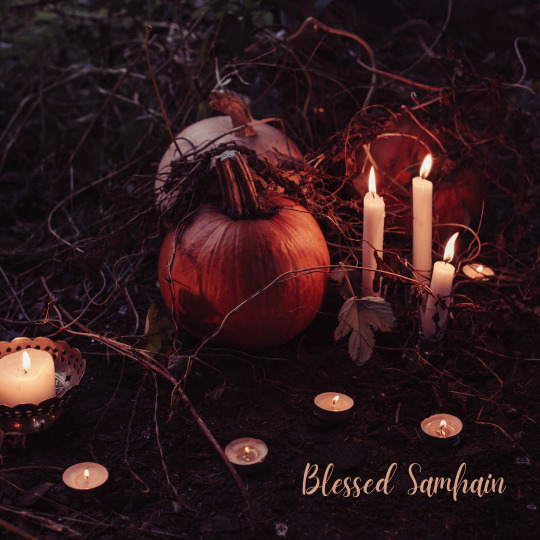#pagan sabbaths
Photo
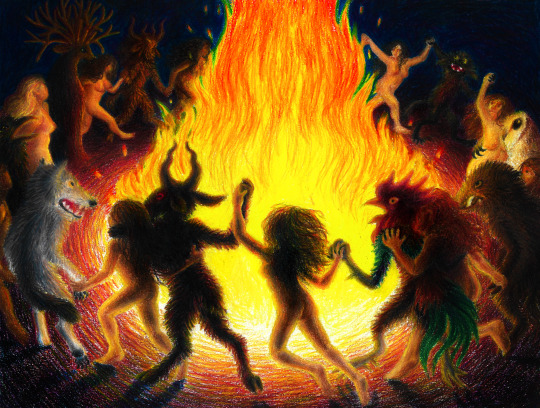
Girls Night
#this is obv based on those famous paintings/illustrations of witches#specifically witches sabbath#those paintings to me always look like some fun nice ritual or interaction w some pagan spirits#up until I notice the dead babies or smth in the painting lol#like that one where theyre in a circle with the goat who has flowers on his head?#absolutely just looks like a bunch of friends hanging out until i notice they are giving him babies to eat#anyway#this is an illustration of that interpretation of those paintings#girls night w some spirits#art#illustration#colored pencil
8K notes
·
View notes
Text

I found the this wheel of the year wreath image online but despite searching couldn’t figure out who created it! If anyone does know please comment below! I thought it was such a nice idea, maybe one day I’ll try to make some myself.
#wheel of the year#witch altar#witches' sabbath#witchblr#witches of tumblr#witchcraft#wicca#pagan#witchy#witchy things#magick#baby witch#ostara#mabon#Yule#imbolc#Samhain#Lammas#litha#solstice#equinox#witches altar#witch's altar#altar setup#lughnassadh#beltaine#Beltane#wiccan altar#pagan altar
648 notes
·
View notes
Text

✨🌱🌸 Blessed Beltane 🌸🌱✨
#witch#witchcraft#pagan#nature#witchy#magic#traditional witchcraft#magick#wicca#witchblr#witchy woman#witches of tumblr#wiccan#Beltane#walpurgisnacht#walpurgis night#sabba#sabbath
597 notes
·
View notes
Text
Witchcraft 101: Wicca & The Wheel of The Year
Paganism - An umbrella term for many nature-based and polytheistic spiritual traditions. Note that not all pagans practice witchcraft.
Wicca - A pagan, nature-based religious movement. Wicca blends aspects of witchcraft, nature veneration, and ceremonial magic. It places a strong emphasis on honoring nature and follows a duotheistic belief system often known as the Triple Goddess and Horned God.
Wheel of The Year
The wheel reflects the cyclical nature of life, death, and rebirth in the natural world and is central to the rituals, spells, and celebrations of many pagan and witchcraft traditions. The Wheel of the Year is divided into eight significant points, which correspond to the Sabbats or festivals:
Samhain (October 31st): Also known as All Hollow's Eve, marks the beginning of the Wheel of the Year and is associated with the end of the harvest season and the onset of winter. Samhain is a time for honoring ancestors, reflecting on mortality, and recognizing the thinning of the veil between the physical and spirit worlds. Samhain is a time to acknowledge the cyclical nature of life and death and to connect with the spiritual realm.
Yule (Winter Solstice, typically around December 21st): Marks the rebirth of the sun, with a focus on light, hope, and renewal during the darkest time of the year. Yule customs include lighting candles or a Yule log, feasting, gift-giving, and spending time with loved ones. It's a significant part of the Wheel of the Year, emphasizing the cyclical nature of life and the changing seasons.
Imbolc (February 1st): Marks the early signs of spring and the gradual return of light and warmth. Imbolc is associated with the Celtic goddess Brigid and is a time for purification, cleaning, and preparing for the coming season's growth. It's often celebrated with rituals, candle lighting, and dedication to Brigid. Imbolc highlights the theme of renewal and the awakening of life after the winter months.
Ostara (Spring Equinox, typically around March 21st): Marks the arrival of spring, where day and night are in balance. Ostara is a time for celebrating fertility, new beginnings, and the growth of life. It is often associated with themes of rebirth, renewal, and the awakening of nature. Common customs include egg decorating, planting seeds, and celebrating the return of warmth and longer days.
Beltane (May 1st): Celebration of fertility, love, and the union of the goddess and god. Beltane is often observed with rituals, bonfires, Maypole dancing, and other festivities that emphasize the vitality and growth of life in the natural world.
Midsummer (Summer Solstice, typically around June 21st): Also known as Litha, marks the longest day of the year when the sun is at its peak. Midsummer is a time for harnessing the sun's energy, celebrating the abundance of nature, and enjoying outdoor festivities. Common customs include lighting bonfires, dancing, and gathering herbs and flowers for magical and medicinal purposes.
Lughnasadh (August 1st): Also known as Lammas, marks the first harvest of the year and is associated with the Celtic god Lugh. Lughnasadh is a festival dedicated to expressing gratitude for the Earth's bountiful harvest and agricultural abundance. Traditional practices during this time involve crafting corn dollies, enjoying meals made from freshly harvested crops, and engaging in various games and competitions.
Mabon (Autumn Equinox, typically around September 21st): Marks the second harvest and a time of balance when day and night are equal. Mabon is a festival for reflecting on gratitude, giving thanks for the fruits of the Earth, and preparing for the darker months ahead. Common customs include feasting on seasonal foods, making offerings to the land, and creating altars with symbols of the season.
#divination#witchcraft#witchblr#grimoire#magick#baby witch#witchery#witchcraft 101#spirituality#broom closet#fyp#sabbaths#paganism#paganblr#wicca
203 notes
·
View notes
Text
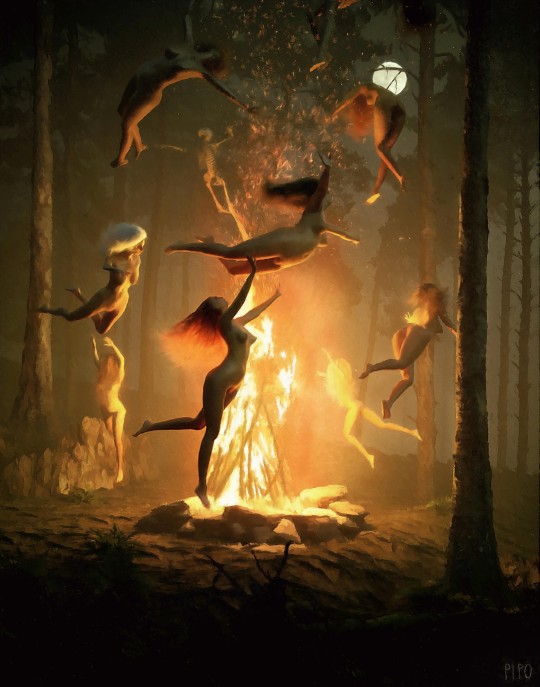
Philip Hofmänner
#boszorkány#witch#koven#coven#boszorkányszombat#witches sabbath#természet#nature#máglya#bonfire#erdő#forest#pogány#pagan#boszorkányság#witchcraft#witchcore#boszorkány koven#witch coven#Witch cult#boszorkány kultusz#Philip Hofmänner#telihold#full moon
702 notes
·
View notes
Text
🕯️Imbolc Preparations 🌱

What an eventful winter it’s been!After a long period of rest, I’m really looking forward to Imbolc. Here are some things I’ve done to prepare:
🌲 Putting away all the holiday decorations
🌱 Planting seeds
📦 Re-organising and getting rid of old items
♻️ Recycling old paperwork/schoolwork
💻 Deleting old software and documents from school
📱 Deleting apps, photos, texts
👕 Repairing old clothes and buying new clothes
📓 Journalling and making plans to set in motion
🕯️ Making plans for Imbolc

#imbolc#wiccan sabbaths#wiccan sabbat#pagan sabbats#witches sabbat#wheel of the year#sabbat#beginner witch
76 notes
·
View notes
Text
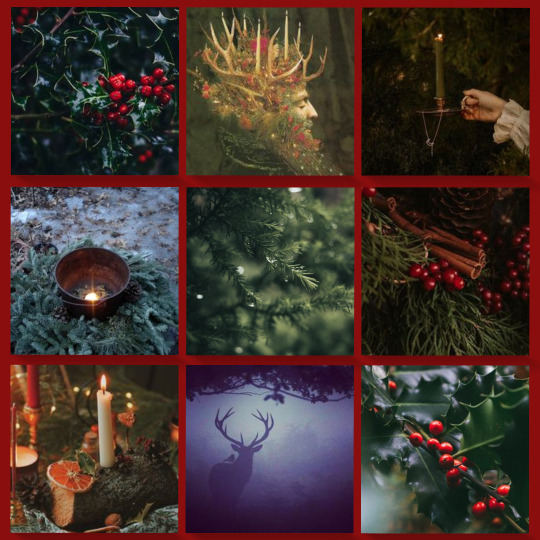
Blessed Winter Solstice!🕯️
#witchcraft#witchblr#witches of tumblr#paganism#pagan witch#yule#winter solstice#yuletide#wheel of the year#witches sabbath#holly king#horned god#darkest night#wintercore#strega#italianwitch
147 notes
·
View notes
Text

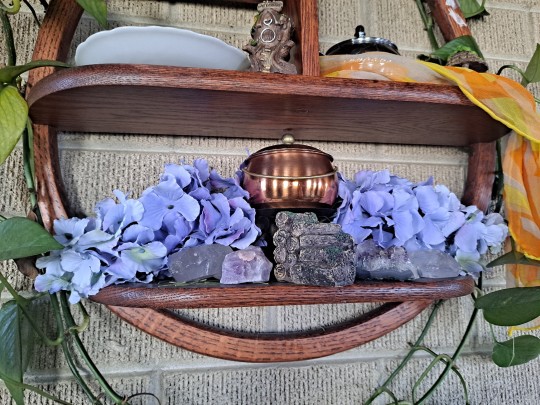

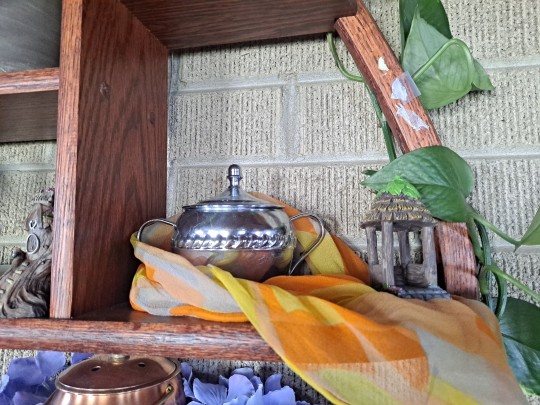



Blessed Ostara!
Onthegowitchery
#ostara#pagan altar#spring equinox#witches sabbath#witchcraft#witchblr#pagan#witch#spells#magic#baby witch#wicca#magick#village witch
310 notes
·
View notes
Text
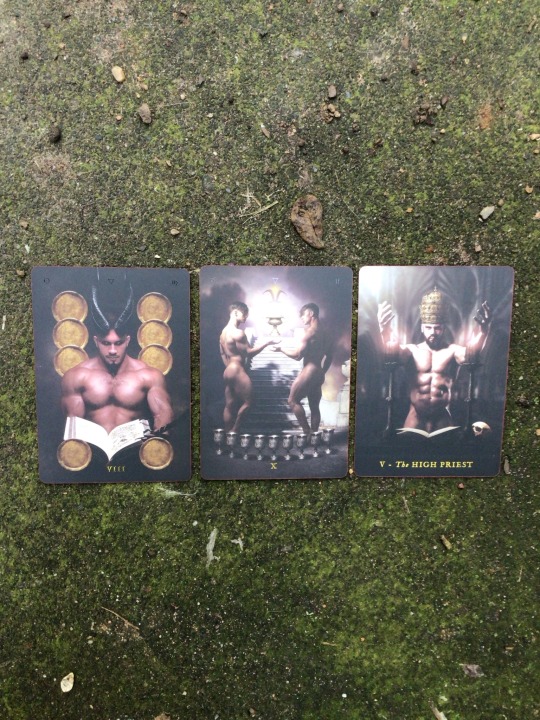
There is a sense of a growing separation between you and those within your social or business circle of friends today. It feels as if it is a prompt to begin a deeper external exploration into why this divide is being noticed. After all it doesn’t affect or change your affection you hold for this person or persons. What really might be going on today is that you are beginning to become fully aware of the major differences between you rather than your preconceived similarities.
#The Sabbath Tarot#tarot#tarot cards#tarot deck#tarot card reader#tarot card reading#tarot for the day#message for the collective#divination#fortune telling#fortune teller#tarot reading#tarot reader#gay pagan#message for the day
33 notes
·
View notes
Text
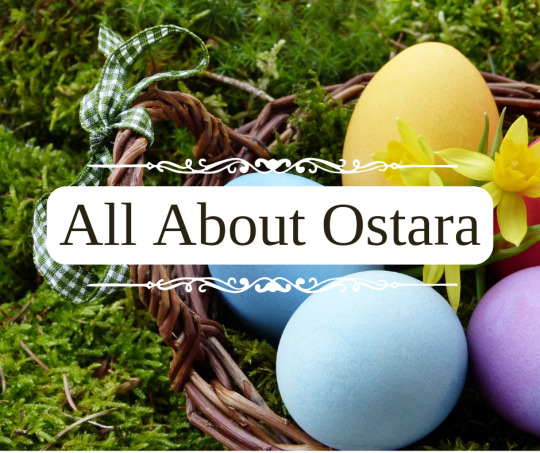
All About Ostara
In this context, Ostara is simply the name for the modern pagan celebration of the spring equinox, celebrated in the Northern Hemisphere around March 19th, or by some on the first full moon after the spring equinox. It is considered a Germanic holiday, but we'll talk a little about the different Goddesses associated with the holiday Ostara, as well as the history and where we're at today with our findings.
Unfortunately, there is not much historical text about the holiday Ostara or the associated ancient holiday Eostre, with the earliest known text being from an English monk from the 7th century, Venerable Bede. In his texts, he states that the rough equivalent of the month of April was dedicated to the Goddess Eostre and called Eosturmonath, but that was about all it mentioned.
Monks like Bede back in the day had orders to Christianize pagan traditions in order to slowly convert pagans to Christianity in the least-resistant way, which often meant adopting their festival dates, names of feasts, and whatnot, which was the purpose of mentioning this holiday in his texts in the first place.
Back in the day, the written reoccurant date of Easter had been debated since it began, as the Ressurection date was hard to nail down. Everyone just knew it happened in spring, so different regions celebrated it at different times. But, scholars believe the Christian church most likely saw that there were date overlaps in pagan celebrations, the Ressurection, and Passover as well, and decided to announce Easter Sunday would always fall on the sunday after the first full moon of the spring equinox, following popular pagan lunar traditions. They also adopted the new name from Eostre, cleverly combining the current pagan celebrations around rebirth and the sun into their own holiday traditions, in order to convert people to their religion, while also uniting their own people to celebrate on one date.
Although at one point these were all different celebrations, the Christian church did a very good job of combining and converting the pagan celebrations into their own, enmeshing them for life in history books and making it hard for modern day scholars to distinguish the origins of the pagan holidays seperate from the Christian church's.
After that, the next set of text with a reference to the holiday Ostara or Eostre came over a thousand years later during the Romantic period in 1835, by one of the Grimm brothers, Jacob, while he talked about mythology. In his work, he bridged Eostre with it's Germanic counterpart, Ostera or "Easter" as we know it today, and with the Goddess Ostara. In medieval Germany, they celebrated Ostarun in the month of Ostarmanoth, which gave way to the modern feast of Ostern ("Easter") today. He used these overlaps and more to claim that the two holidays and even Goddesses were most likely one historically
Just like with Grimm, there is mostly just speculation based on language, names, celebrations, etc. In modern-day society, it seems the holidays and Goddesses/Gods of Ostara, Eostre, and Easter have all been mashed up together from bridging multiple pagan religions with Christianity and struggling to seperate it again when we have almost no historical texts to help, since everything way back in the day was based on oral tradition.
As for the Goddess Eostre, who was supposedly a Goddess of fertility and light, she was so rooted in the region surrounding her that it was easier to adopt her namesake for the new Easter holiday (that enmeshed the series of Christian holidays) rather than rebrand under something Christian. According to Bede, her feasting was held in the month of April and celebrated spring. But that's all he mentioned, so her actual traditions have been lost to time, with only speculation to go off of.
After that, Grimm tried to link her with the Goddess Ostara, but we have no historical texts saying she is the same. Nowadays, the only mentions of the Goddess Eostre is with new-age pagan Wiccan practices where they, too, seemed to have linked her with the Goddess Ostara. Historically, it is most likely that the Goddess Eostre is a region-specific Goddess, as she was worshipped in Southeastern England by Anglo-Saxons, and that's where we see the oldest versions of her name referenced in text.
As for the Goddess Ostara, according to Grimm, she seems to have been the more wide-spread form of the Germanic Goddess Eostre, instead of region-specific, and he was the one who first translated her name to Ostara. This is the first historical text we have mentioning Ostara as a Goddess and not just a holiday, which means they (Eostre and Ostara) are technically one in the same, since Grimm was the one who translated the Goddesses name to German in the context that we use today.
In terms of associations with the newly translated Goddess Ostara, the first known reference of rabbits with Ostara in writing was mentioned in a mythology text written by Adolf Holtzmann in 1874 where he related the German tradition of the Easter Hare with Ostara by claiming the symbolism of 'the hare' was also probably sacred to the Goddess.
Afterwards, In 1889, an issue in the Journal of American Notes and Queries talks about the Germanic Tradition of the Easter Hare (gifting cotton stuffed flannel bunnies to children along with Easter eggs) and the story behind it, stating that "The hare was originally a bird, and was changed into a quadruped by the Goddess Ostara; in gratitude to Ostara or Eastre, the hare exercises its original bird function to lay eggs for the Goddess on her festal day." But that is as far as we've gotten in tracing it in texts.
Most likely, oral tradition has reigned supreme throughout history, and different narratives have surfaced about the origins of the symbolism with Ostara and rabbits and eggs and other things, so it's hard to know for certain what is "true" to celebrating the Goddess and holiday Ostara and what isn't.
In summary, based on the limited evidence that we have surrounding history on this holiday and deity(ies), you should feel free to celebrate Ostara in a way that is meaningful to you, especially since there is much overlap with multiple religions and practices. I did my best to round up the most commonly accepted ways to celebrate, the symbolism, and more related to the holiday and Goddess Ostara/Eostre.
Ostara Associations:
Colors - white, green, yellow, pink, purple, pastels
Food - eggs, fresh greens, dairy products, hot crossed buns, lamb, asparagus, honey, berries
Animals - hares/rabbits and song birds, baby animals, snakes
Items - decorated eggs, lillies, daffodils, tulips, crocuses, dandelions, lavender, other flowers, lemongrass, thyme, red clover, birch trees, seeds
Crystals - aquamarine, amethyst, rose quartz, moonstone, fluorite, amazonite, clear quartz
Other - fertility, renewal, dawn, spring, balance, joy, growth
Ways to Celebrate Ostara:
hold a feast, especially on the full moon after the equinox
plant seeds
connect with nature or go on a walk
decorate eggs
prepare your altar for spring
make a cotton stuffed flannel rabbit
decorate for spring with greenery and flowers
cleanse and clean your home
welcome the dawn and sunrise
bake hot crossed buns
create something
#ostara#eostre#eastre#easter#pagan#wiccan#witchy#witch#witchcore#witches#witchcraft#witchblr#witch community#goddess#gods#holiday#sabbat#sabbath#equinox#moon#full moon#magick#magic#spell#spellwork#cleansing#spiritualism#spirituality#spiritual#baby witch
36 notes
·
View notes
Text

🍞🍄🍮🫒🍾🍯🥚
#winter solstice#winter foods#winter witch#winter aesthetic#winter holidays#sabbaths#wheel of the year#wiccan#wiccablr#green wicca#pagan wicca#wiccamagic#wiccalife#wicca#witchy#witchythings#witchy vibes#witchcore#witch aesthetic#witchblr#green witch#witch community#witch blog#baby witch tips#witch tips#beginner witch#witches of tumblr#witch stuff#witch life#witchy aesthetic
33 notes
·
View notes
Text

Yuletide blessings from Mari Lwyd 🎄 The skeletal Welsh Christmas horse Mari Lloyd is a wassailing (festive drinking) tradition in which those who carry the horse from door to door sing riddles in demand for cider, beer, mulled wine, or what have you to do for a cup of holiday cheer. 🥂
Although several cloaked animal skull figures popularly feature throughout pagan British history Mari Lwyd is rather absent from any surviving medieval accounts among these. That is not to say definitively that Mari Lwyd cavorted about no earlier than the 1800 date commonly given considering centuries of real effort to erase such traditions. In fact throughout the 1980-90s as part of that era’s “Satanic Panic” Mari Lwyd was highly discouraged as a pagan act even by English secularists simply because it looked “tacky”.
Mari Lwyd art by PJ Superior
T shirts until year’s end 💀
MissPJsuperior.etsy.com
#mari lwyd#spooky christmas#pagan witch#winter solstice#cryptid#goth christmas#old ways#wassail#horse skull#epic rap battles of history#let me in#witches sabbath
32 notes
·
View notes
Text
I woke up at 3AM with someone banging on the door and the wind moaning haaard.
Damn, Samhain really did start.
#samhain#witchblr#witch community#witch#witchcraft#witches of tumblr#witches#pagan witch#witches' sabbath#happy sabbath#sabbath#witchy#folk witch#folk witchcraft#spiritual practitioner#spirit work
33 notes
·
View notes
Text

For all of those celebrating this May 1st!
#pagan witch#paganism#hellenic devotion#pagan#beltane#paganblr#witches sabbath#celebration#witchblr#witchcraft#green witch#witch community
14 notes
·
View notes
Text
Walpurgisnacht

Walpurgisnacht is a celebration assimilated from Celto-Germanic and Christian beliefs. Although named after the English born saint Walburga, the celebration is known in many pagan versions of the same idea: spring.
One of the most popular versions is that Odin would hunt dark winter spirits in the night of April 30th and May 1st. In more Christian beliefs, the night was filled with magic and witches, which must be scared away with large bonfires.
Although sometimes associated with satanism, partially because of Goethe’s “Faust”, the general idea is to come together and light any kind of fire and welcome spring, glad that winter is over.
“Die Walpurgisnacht. Ein gedicht in drei Gesangen” Johann Friedrich Löwen 1756
#spring#walburga#walpurgisnacht#paganism#heithen#Odin#wodan#german mythology#germanic mythology#Germanic#vikings#viking mythology#norse mythology#goethe#Faust#satanism#witches#sabbaths#viking archaeology#merovingian#Merovingian archaeology#frankish#anglo saxon#mythology#St walburga#witch#sabbathaic#esoteric#coven#witches coven
85 notes
·
View notes
